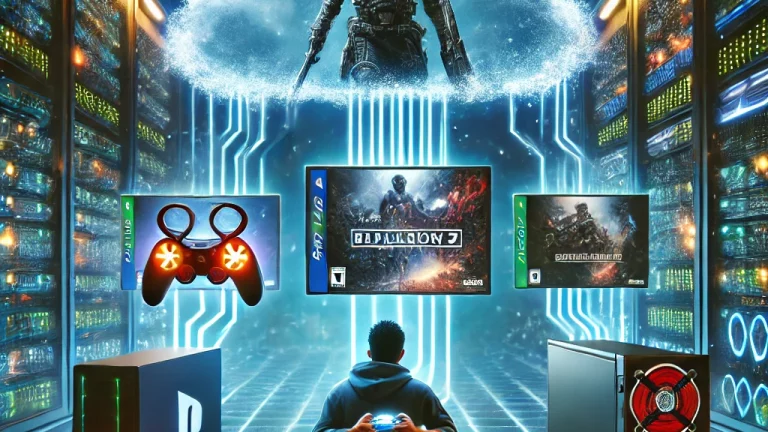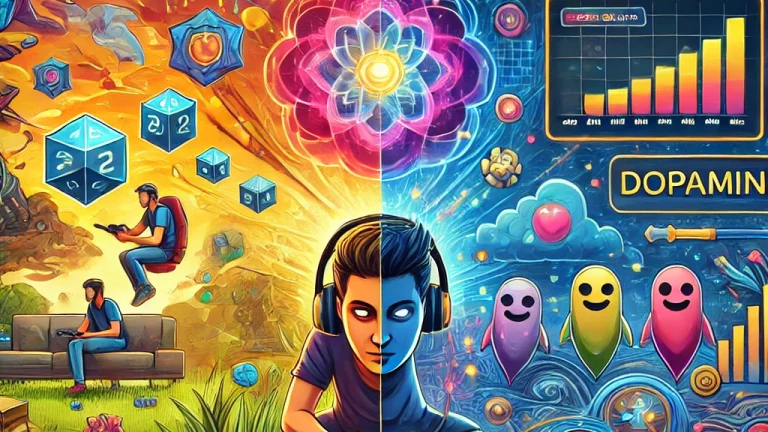
Cloud Gaming Revolution: The End of High-End Hardware?
Introduction: The Rise of Cloud Gaming
The gaming industry has been evolving rapidly, and one of the most transformative trends in recent years is cloud gaming. This technology allows players to stream games directly from powerful remote servers without needing high-end gaming hardware. The question that arises is: Will cloud gaming make expensive gaming PCs and consoles obsolete?
What Is Cloud Gaming?
Cloud gaming, also known as game streaming, works by running games on remote servers and streaming the visuals to a player’s device in real-time. Unlike traditional gaming, where a powerful CPU and GPU are required, cloud gaming offloads the processing work to data centers, making it possible to play AAA titles on almost any device, including smartphones, tablets, smart TVs, and low-end PCs.
The Key Players in the Cloud Gaming Industry
Several companies are investing heavily in cloud gaming, each bringing its own approach to the market:
- NVIDIA GeForce Now – Offers access to a library of games players already own, streamed at high resolutions and frame rates.
- Xbox Cloud Gaming (formerly xCloud) – Integrated with Xbox Game Pass, allowing users to play a variety of games across multiple devices.
- PlayStation Now – Sony’s service for streaming PlayStation titles, including older classics.
- Google Stadia – Although struggling with market adoption, it pioneered cloud gaming with a focus on seamless streaming.
- Amazon Luna – A growing competitor with a unique subscription-based channel model.
Advantages of Cloud Gaming
Cloud gaming comes with several significant benefits, making it an attractive option for both casual and hardcore gamers:
1. Eliminates the Need for Expensive Hardware
With games running on remote servers, players no longer need to invest in high-performance gaming PCs or next-gen consoles. A stable internet connection and a compatible device are all that’s required.
2. Play Anywhere, Anytime
Since cloud gaming works on multiple devices, players can switch from playing on a PC to a smartphone or smart TV effortlessly.
3. Instant Access to Games
No need to download and install large game files—everything is streamed instantly, saving both time and storage space.
4. Lower Costs in the Long Run
Instead of spending thousands on gaming hardware and upgrades, players can subscribe to a cloud gaming service for a fraction of the cost.
Challenges Facing Cloud Gaming
Despite its advantages, cloud gaming is not without its limitations:
1. Internet Dependency and Latency Issues
A fast and stable internet connection is essential. Any drop in connectivity can result in lag, stuttering, or poor image quality, making cloud gaming less viable in regions with slow internet.
2. Data Usage Concerns
Streaming high-quality games consumes a significant amount of data, which can be a problem for users with limited bandwidth or data caps.
3. Limited Game Libraries
Not all games are available on cloud gaming platforms, as licensing agreements and exclusive deals restrict access to certain titles.
4. Ownership and Control Issues
With cloud gaming, users don’t actually own the games they play. If a service shuts down or a title is removed, players lose access, unlike traditional game purchases.
Will Cloud Gaming Replace High-End Hardware?
While cloud gaming offers a compelling alternative, high-end gaming hardware is unlikely to disappear entirely. Here’s why:
- Competitive Gamers Need Ultra-Low Latency – Professional and competitive players require near-instant response times, which cloud gaming cannot yet fully guarantee.
- Modding and Customization – Many PC gamers enjoy modding their games, tweaking graphics settings, and overclocking hardware, which isn’t possible with cloud gaming.
- Internet Infrastructure Limitations – Until global internet speeds and stability improve, cloud gaming won’t be accessible or reliable for everyone.
- Game Preservation and Offline Play – Owning a physical or digital copy ensures that games remain playable even if a cloud service shuts down.
The Future of Cloud Gaming
The future of cloud gaming looks promising, with 5G networks, AI-driven optimizations, and edge computing improving performance and accessibility. As technology advances, we might see a hybrid model where cloud gaming complements traditional gaming rather than replacing it entirely.
Conclusion: A New Era of Gaming
Cloud gaming is undoubtedly revolutionizing the gaming industry, making high-quality gaming more accessible than ever. However, while it reduces the need for high-end hardware, it’s not yet a full replacement for traditional gaming setups. For now, cloud gaming and traditional gaming hardware will continue to coexist, offering players multiple ways to enjoy their favorite games.
Whether you’re a casual gamer or a hardcore enthusiast, cloud gaming represents a new era—one that is convenient, cost-effective, and constantly evolving.

